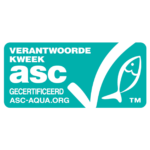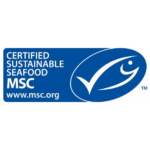Pilchard, European
Atlantic Ocean, north-east (FAO 27)
Deelgebieden: English Channel, west
Midwater otter trawl, Purse seines, Gillnets
- Jan
- Feb
- Mar
- Apr
- May
- Jun
- Jul
- Aug
- Sep
- Oct
- Nov
- Dec
There are two families in the order Clupeiformes; the herring family (Clupidae) and the anchovy family (Engraulidae) and are relatively small, silver-coloured fish. They swim in large, pelagic schools and feed on plankton. They are occasionally found near the shore, however they usually swim further out in the open sea at depths up to 200 m. Most species are capable of producing a lot of eggs each spawning event, up to 200.000 per adult female. A large share of the global wild catch consists of haring-like fish. Not everything is used for direct human consumption, a large share is processed as fish meal or fish oil that form the essential ingredient for fish feed in aquaculture. Haring-like fish swim in large schools which makes them susceptible to large scale (industrial) fishing.
The European pilchard can mainly be found in the north-east Atlantic Ocean but can also be found in the Mediterranean Sea. Their name originates from the island Sardinia, as large populations of sardine used to surround this area. The European pilchard always swim in large schools and feed on plankton. They normally reach up to sizes of 20 cm and can reach an age of 15 years.
Atlantic Ocean, north-east (FAO 27)
Deelgebieden: English Channel, west
Midwater otter trawl, Purse seines, Gillnets
Atlantic Ocean, north-east (FAO 27)
Deelgebieden: Irish Sea,west of Ireland, Porcupine Bank, English Channel, Bristol Channel, Celtic Sea and south-west of Ireland
Purse seines

Fish with the ASC label is farmed in a sustainable manner.

Fish with the MSC label is caught sustainably.
This fish is not being overfished or is being responsibly farmed, with minimal impact on the environment.
This fish is a second choice. There are still some improvements to be made in this fishery or fish farm.
Do not buy this fish. It's being overfished or the way it's farmed or caught has a negative impact on the environment.

There is fish available of this species that is farmed or caught using high welfare standards.

GlobalG.A.P. certified farms are doing a step in the right direction in terms of sustainability. A few species with this label are getting a better score on the VISwijzer.

Organic standards are the strictest when it comes to fish feed. They also require certain measures for animal well-being.